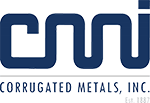Many consumers are now more inclined to purchase electric vehicles (EVs) due to their environmental benefits and lower operating costs. This surge in demand has also increased the demand for EV production facilities and supporting infrastructure. As a result, automobile manufacturers are now constructing or upgrading new plants to ensure a smooth supply chain for vehicle parts. This trend is expected to continue due to market growth, shifting consumer preferences, and government support.
This article will provide an overview of EV facilities’ operation and list the most common corrugated EV components.
The Operating Principles of Electrical Vehicle Facilities
The guiding principles of EV facilities encompass various considerations and practices unique to the production and operation of vehicles. These principles can be broadly categorized into four key areas: production processes, infrastructure requirements, sustainability measures, and quality control.
Production Processes
Electrical vehicle facilities prioritize the production of high-quality batteries. This involves specialized processes such as cell assembly, battery pack integration, and testing to ensure optimal performance, safety, and durability. They also focus on the assembly of electric drivetrains, which include electric motors, power electronics, and associated control systems.
Infrastructure Requirements
The establishments may incorporate charging infrastructure within their premises to support the vehicles’ testing, pre-delivery charging, and maintenance. This includes charging stations, appropriate electrical connections, and power management systems. Some facilities may also offer battery swapping services, allowing quick replacements instead of lengthy recharging times.
Sustainability Measures
Waste management strategies are implemented to handle batteries, electronic components, and other hazardous waste generated during production. These ensure proper recycling, disposal, and compliance with environmental regulations. The facilities also seek to reduce their carbon footprint by incorporating renewable energy sources.
Quality Control
EV facilities conduct rigorous testing and validation to ensure the vehicles’ quality, safety, and reliability. This encompasses comprehensive testing of batteries, drivetrain components, electrical systems, and vehicle performance. They also adhere to relevant regulations and industry standards for safety and emissions.
Common Corrugated EV Parts and Components
Corrugation is a manufacturing process that creates a distinctive pattern of ridges and grooves. In the EV industry, corrugated parts and components are integral to the construction and operation of vehicles. Below are some of the most typical corrugated EV components and their functions:
Battery Enclosures
Battery enclosures are protective structures that house high-voltage battery packs. Corrugated steel or aluminum panels are used to construct them due to their strength, lightweight nature, and ability to absorb impacts. This grooved design enhances the enclosure’s structural integrity and impact resistance, ensuring the safety of the battery pack.
Heat Shields
EVs generate heat during operation, particularly from the battery and power electronics. Grooved heat shields, often made from aluminum, manage and dissipate this heat. These shields protect sensitive components from excessive temperatures and help maintain the efficiency and longevity of the vehicle’s electrical systems.
Thermal Management Components
Corrugated metal or plastic sheets are used as heat sinks to efficiently transfer heat away from critical components. Flexible hoses or tubes also facilitate the circulation of coolant fluid, assisting in the cooling process of the electric drivetrain.
Structural Reinforcements
Panels can be utilized as structural reinforcements in EVs, particularly in areas where added strength is required. They provide rigidity, impact resistance, and weight reduction benefits. They can also be employed in the chassis, door panels, or roof to enhance overall structural integrity while maintaining lightweight characteristics.
Sound and Vibration Dampening
Sound and vibration dampening aims at enhancing passenger comfort and reducing noise pollution. When incorporated into acoustic barriers, corrugated panels or laminates can limit the noise transmission from the electric drivetrain or road surfaces.
Trust Corrugated Metals for Formed Metal Products and Services
Corrugated Metals is driven by a steadfast dedication to continuously enhancing our product offerings to meet the market’s ever-changing demands. We believe in pushing boundaries and exploring new possibilities to provide our customers with the most advanced products. Our team is also committed to staying at the forefront of technological advancements.
Contact us now to learn more about our products and services, or request a quote today!

